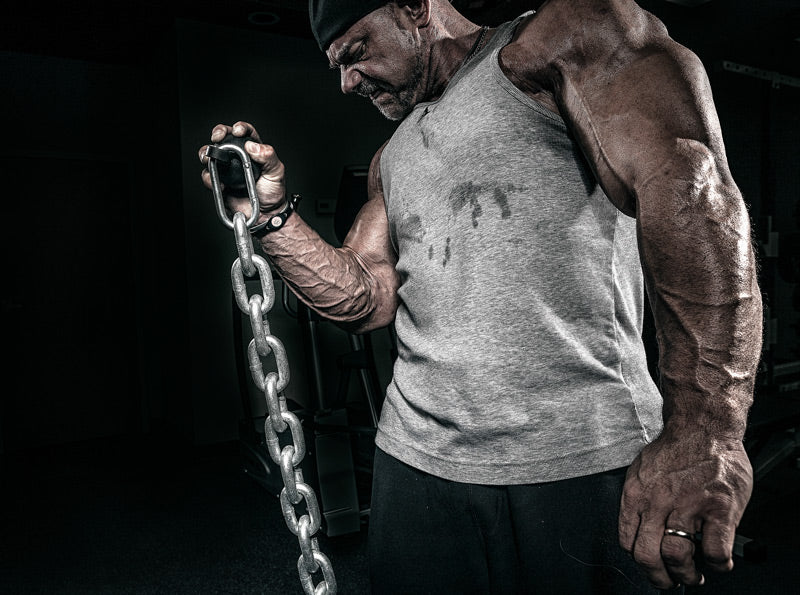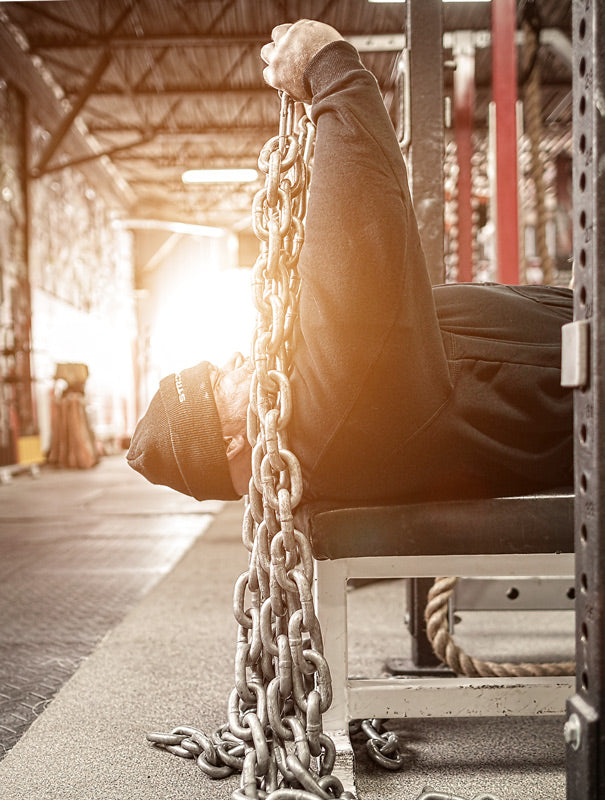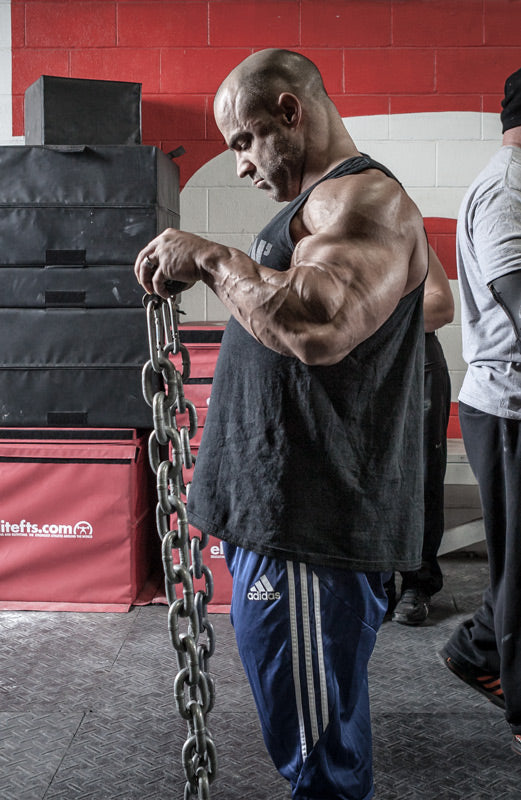
One of the most important aspects of physical preparation for any sport is ensuring the athletes are in proper shape to play their sport for the duration of a game or practice with high energy. A football player can be the strongest player in the weight room, but if he can’t last more than a few plays on the field, he is worthless. A basketball player may be the quickest player on the court, but if he can’t go up and down the court more than just a few times without having to come out of the game, he cannot help his team. Poor physical condition is a roadblock for athletic success. Athletes that are not in proper shape will have poor sports performance as well as an increased likelihood of injury. From a performance standpoint, fatigue can result in a loss of speed, loss of strength, poor reaction time, diminished sport technique, and poor mental judgment. Fatigue can also cause athletes to alter speed mechanics, be out of position when changing directions, and in contact sports, be out of position when making contact, all of which can result in injury.
WATCH: Buddy Morris on Stress and Recovery for the Athlete
In this day and age with all the knowledge we have available to us, you would think that we have gotten past the idea that distance running will get an athlete in shape to play baseball, soccer, basketball, or even football. However, I still know of teams in these sports that run distances up to three miles to get fit. In fact, we should probably start veering away from distances all the way down to 100 meters if we want to place athletes in the best position to be physically prepared for the endurance demands of their sport.
Do The Numbers Really Add Up?
As strength and conditioning coaches, we say all the time that we design sport-specific programs, but what does that really mean? I can’t tell you the number of different sports that I have seen performing similar conditioning strategies. These strategies include running in a straight line for 10 to 20 seconds with rest between two to three times the activity and completing a total of 10 to 16 total reps. Given the description above, consider how many football teams you know of that run 100s or 110s for their primary form of conditioning. A skilled player will typically run up to sixteen 110s in 15 seconds with about 40 to 45 seconds in between each rep, while a big skill player or a lineman will get additional time.
Laurin Rinder © 123rf.com
Skill players are generally the fastest players on the field, and if they ran an all-out 110 yards, they could probably complete it in 11 seconds. If they were required to make 15 seconds for their conditioning, they would be running at 73 percent of their max speed. What football player could be successful when only giving 73 percent effort on every play? What coach would allow a player who only gave 73 percent effort to stay on the field? Only giving 73 percent effort would be considered taking plays off by the standards of any football coach I have ever met. How many football players run 110 yards in a single play, much less multiple plays per game? You can probably count the total number of players that run this distance in a single play from every single game you watch on both Saturday and Sunday combined on one hand and still have fingers left over. Wide receivers and defensive backs will run more than other positions but still almost never run this far in a single play in any given game. Offensive linemen, on the other hand, spend most of their time running between zero and ten yards per play. Furthermore, why do we think that someone who runs 16 to 20 reps per workout is prepared for a practice in which they may get between 40 to 60 plays (and that is not counting reps during individual work, before the team), period? In fact, some scrimmages may go up to 150 plays. Granted, no player on the team will be on the field for all 150 plays, but there will be several that get 50 or more plays. In a game, there will be an average of 66 plays for each side of the ball. And, there will be players on every team that will be on the field for every one of those plays. On top of that, most possessions only last for five to six plays (rather than 16), giving the players additional rest before coming back on the field.What Is Actually Specific?
Sport-specific is a horrible term. We place that label on almost everything we do to convince sport coaches we are designing a program that is centered on their team. However, it is quite easy to see that what is commonly practiced is anything but sport-specific. I am not going to take up this debate in this article, but I will provide an outline of how to analyze the specifics of a sport in order to create a better conditioning program.RELATED: How to Program for a Large Group of Athletes with Limited Resources
In order to approach something that is actually sport-specific, we must take into account the actual physical activity and demands of the sport. Each sport will have a different set of characteristics with a different level of emphasis given to each type of activity. For example, both a basketball player and a volleyball athlete will sprint, jump, and change directions, but a hitter in volleyball will get far more jumps than a basketball guard throughout the course of a game and will spend much less time sprinting. On the other hand, a baseball pitcher will sprint, jump, and change directions, but will do those three things minimally compared to the volume of throwing that he must perform. The strategies that I will discuss in this article can be applied to any sport, but I will primarily use football as an example. The demands of football players differ greatly depending on each position, as can be seen in the table, below. All players will have the same basic demands of time of effort and rest between plays. However, the activity that actually occurs within each play is quite different.

Putting It Together
Once the specific physical demands have been analyzed, we can create a plan that targets those traits. In order to achieve the highest carryover to the conditioning level we desire, it is imperative that we mimic the characteristics of the sport/position as closely as possible, including not only energy system demands, but also actions, movement patterns, intensity levels, and impact. The closer we get to simulating the game, the better the results will translate to physical readiness. In order to do this for a football player, we must be willing to move past running in straight lines for extended periods of time. There is no reason to have a football player perform drills for up to a minute at a time to prepare for plays that last between five and seven seconds. This is an entirely different energy system. Designing a program of this nature requires that we must be creative in designing drills for each position. Certain aspects of the demands of each position must be satisfied in order for conditioning to be optimally effective. First off, we must include drills that involve a change of direction or movement pattern. Football is not a linear sport. Next, working against resistance and delivering or receiving impact poses a demand on the nervous system that must be addressed under conditions that require endurance rather than in a weight room in which rest is given in order to train strength. We cannot have athletes hitting each other in a strength and conditioning setting, but we can simulate impact by utilizing exercises with resistance or ground contact, such as tire flips, mat drills, up-downs, or tire battles. Players must be able to produce force under fatigued conditions or they will get pushed around or knocked backward in the game. The table below gives short examples of drills that target the abilities required by the three position classifications. A creative mind can come up with an endless list of drills that would be beneficial. Drills can be as simple as cone agility drills, hoop drills, orProwler pushes, or they could be more complex drills that target multiple demands. (All of the drills in the table below are ones I have actually used with teams as conditioning workouts.)

Another aspect that must be satisfied is the energy demands. Football is an alactic sport. It is performed with high intensive efforts followed by rest periods that can last four to six times the work interval. Plays typically last five to seven seconds with 25 to 35 seconds between plays when the clock is not stopped. Furthermore, possessions typically last five to six plays, although they can last longer. During longer drives, there will usually be time-outs, penalties, or other stoppages of play that provide longer rest and recovery. Therefore, performing high reps (20 or more) or reps for extended periods of time (15 to 60 or more seconds) with low intensity or declining effort are not optimum means of developing the endurance demanded of a football player. Drills of this nature should be trained with timeframes similar to that of a football game. All of the drills listed in the table above will last six to ten seconds for collegiate football players. They can be performed in sets and reps, similar to plays in a series or possession during a game. A good way to program this is to start with five sets of five and then add either sets or reps over the course of three or four weeks. Each set should be followed by three minutes of rest.
Periodization
Conditioning practices should be periodized, just like strength training or speed training. The scope of this article does not permit a discussion on the advantages and disadvantages of various periodization models, but it should be recognized that these conditioning strategies should not be performed throughout the entire year. During periods when football is being practiced, or during the season, this sort of training would likely be counterproductive. The best time to utilize these methods is in the final stages of preparation leading to camp, but with at least one week of lower intensity training to allow for recovery prior to the commencement of camp, which will yield significant physical stress.Wrapping It Up
Conditioning is essentially endurance training for the acyclic athlete. No, it does not involve long-distance running or getting on cardio equipment for half an hour or more. Instead, it should be activity curtailed to the specific demands of the given sport. These demands include the duration of each rep, duration of the game/practice session, rest between reps and series, intensity level, and nature of the sports activity (change of direction, acceleration, jumping/landing, contact, mental stimuli, impact/resistance, etc.)READ MORE: The Best Speed Drill for High School Athletes
In order for an athlete to be successful, they must be able to maintain high energy and give a high level of effort throughout the game. If they fatigue, they are slower, weaker, ineffective, and at higher risk for injury. I am not condemning popular methods of conditioning such as 110s, 100s, or even 40s. I have used all of these, and there is an appropriate time for their use. Conditioning at a lower intensity has its purpose but is not the best preparation in the final stages of training. The physical demands required by nearly any sport are simply not met by running in a straight line at a low intensity (compared to the actual sport). If we want to put the athletes with whom we work in the best possible position to succeed, we must train them in a manner that will prepare them for their sport.
Recommended Reading
- Science of Sports Training by Thomas Kurz – 2001
-
Programming and Organization of Training by Yuri Verkhoshansky – 1985 -
EliteFTS Q&A Post with Landon Evans – December 19, 2010 -
EliteFTS Q&A Post with Mark McLaughlin – April 5, 2009 -
EliteFTS Q&A Post with Mark McLaughlin – April 24, 2009 -
EliteFTS Q&A Post with Mark McLaughlin – August 3, 2009 -
EliteFTS Q&A Post with Buddy Morris “Coach X” – October 27, 2013
David Adamson was the strength and conditioning coach at the Missouri University of Science and Technology from 2016 to 2018. Prior to Missouri S&T, he spent nine years as the assistant director of speed, strength, and conditioning at the University of Texas at El Paso (UTEP). He was involved in coaching at the university level from 2001 to 2018, including stops at Virginia Commonwealth University and Arizona State University. In addition to coaching, David lives by his experience under the bar. He began lifting in 1993 and competed in powerlifting from 2001 to 2016. During this time, he competed in many different gear divisions, including raw, and in every weight class from 181 to 242.











































































































